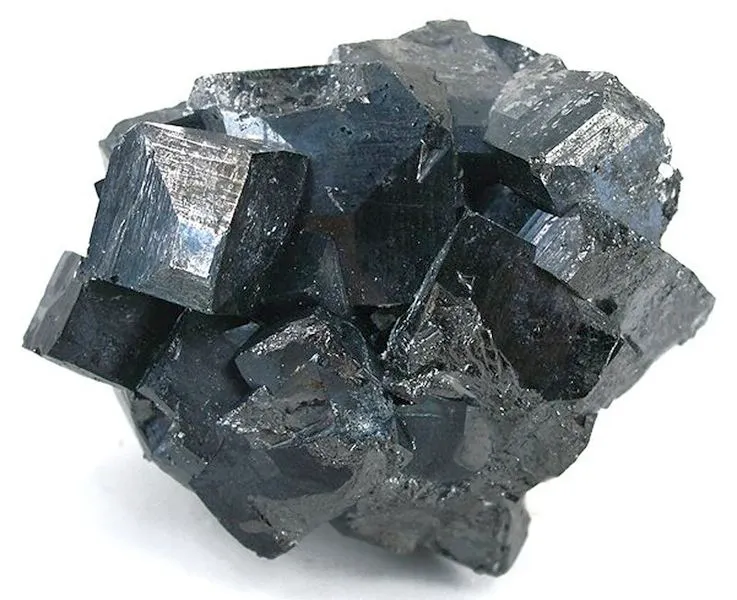
Appearance
With a Mohs hardness of 5.6, magnetite is metallically lustrous, black or brownish-black, and leaves a black streak behind. Magnetite microcrystals are frequently found in igneous and metamorphic rocks. Both the ferrous (Fe+2) and ferric (Fe+3) forms of iron ions are present in its crystal structure, making it one of the most prevalent metal oxides.
Geographical Distribution
Magnetite deposits can be found in many parts of the world, including the US, Australia, Brazil, China, and Russia. These deposits may be mined profitably and are frequently found in high concentrations. Magnetite can also be found in sedimentary rocks, such as banded iron formations, lake and marine sediments, and as both detrital grains and magnetofossils. These rocks are in addition to igneous rocks.
History
Large concentrations of magnetite are found in Early Proterozoic sedimentary rocks, which date from between 2.5 and 1.6 billion years ago. At this time, the world’s seas and atmosphere were going through a major chemical shift. The deposits were created when shallow marine sediments precipitated in the oceans.
Metaphysical Properties
Due to its magnetic qualities, magnetite serves as a grounding stone and is believed to possess strong positive-negative polarity, which means it attracts and repels while supplying energy and a calming influence. Love, loyalty, and devotion are attracted to magnetite.

Chemical Composition
Iron oxide, which has equal amounts of iron II and iron III, is the main component of magnetite. Fe3O4 is its empirical formula; iron(II,III) oxide is a common way to represent it.
Uses
The following are a few of the most typical uses and applications for magnetite:
- Iron Ore Production: One important source of iron ore is magnetite. Steel is made by mining and processing it to obtain iron. Because of its high iron content (about 72%), it is a useful resource for the steel sector. Iron ore resources rich in magnetite are commonly found in nations such as Australia, Brazil, and Russia.
- Magnetic Recording Media: Magnetite was once utilized in magnetic recording medium, including audio and video cassettes. Magnetite was essential to the development of the first magnetic storage devices, even if other materials have largely taken the place of these uses in modern technology.
- Heavy Media Separation: In the mining and mineral processing sectors, magnetite is employed in dense medium separation procedures. In the process of ore beneficiation, it is combined with water to create a dense media, and its magnetic properties are used to separate precious minerals (such as gold, copper, and coal) from waste rock.
- Water Treatment: Magnetite can be utilized as a filtration medium in the treatment and purification of water. Because of its magnetic qualities, it aids in the removal of contaminants from water, including lead, arsenic, and other heavy metals.
- Catalysis: In catalytic applications, magnetite nanoparticles have demonstrated potential. They can operate as catalysts in chemical reactions, especially when it comes to cleaning up the environment by eliminating contaminants from gasses and wastewater.
- Magnetic Nanoparticles: Applications for magnetite nanoparticles in biomedicine include drug delivery systems, hyperthermia therapy for cancer treatment, and magnetic resonance imaging (MRI). They may be targeted to particular areas of the body due to their magnetic capabilities.
- Electromagnetic Shielding: Materials containing magnetite can be used to insulate sensitive electronics from external electromagnetic radiation, a process known as electromagnetic interference (EMI).
Table





